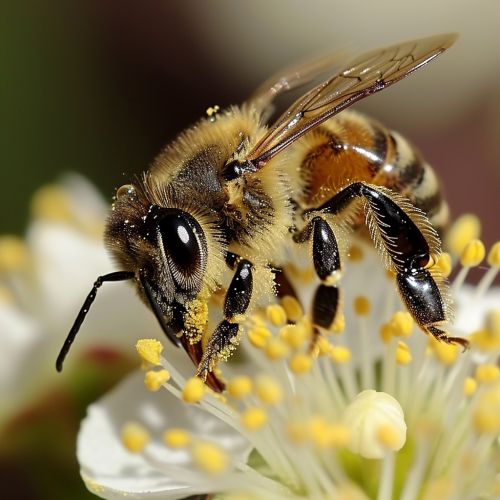Pollinators
Introduction
Pollinators are a crucial part of the ecosystem, responsible for assisting over 80% of the world's flowering plants to reproduce. Without them, humans and wildlife wouldn't have much of the fruits, vegetables, and nuts that are essential to our diet. Beyond this, they also help to purify the air, stabilize soils, and support other wildlife.
Types of Pollinators
There are several types of pollinators, including insects, birds, bats, and other animals. However, the most well-known pollinators are probably bees, which are thought to be responsible for up to a third of the food we eat.
Bees


Bees are perhaps the most recognized pollinators. There are over 20,000 known species of bees in the world today. Many people are familiar with the European honey bee, but there are also carpenter bees, bumblebees, mason bees, and many others. Bees are attracted to bright colors and sweet scents, which lead them to flowers where they collect nectar and pollen.
Birds
Birds, particularly hummingbirds, are also important pollinators. As they sip nectar from flowers, they get pollen on their beaks and feathers, which is then transferred to other flowers as they continue to feed.
Bats
Bats are often overlooked as pollinators, but they play a vital role in the pollination of many plants, particularly in tropical and desert climates. They are especially important for the pollination of plants that bloom at night.
Other Animals
Other animals, such as butterflies, beetles, and even some mammals like lemurs and possums, also contribute to pollination. These animals visit flowers for their nectar, and in the process, they transfer pollen from the male parts of the flower to the female parts, enabling fertilization.
Importance of Pollinators
Pollinators are essential for the reproduction of many plants, including many of the fruits, vegetables, and nuts that humans consume. Without pollinators, our diets would be severely limited, and it would be more difficult to get the variety of nutrients we need to stay healthy.
In addition to their role in food production, pollinators also contribute to the biodiversity of our ecosystems. They help plants reproduce, which in turn provides habitat for other wildlife. This biodiversity is important for a healthy, functioning ecosystem.
Threats to Pollinators
Unfortunately, many pollinator populations are declining due to a variety of factors. Habitat loss, pesticide exposure, disease, and climate change are all contributing to the decline of many pollinator species.
Habitat Loss
As humans continue to develop land for agriculture, housing, and industry, pollinators are losing the habitats they need to survive. This loss of habitat can lead to a decrease in pollinator populations, as they have fewer places to live and find food.
Pesticide Exposure
Pesticides are often used in agriculture to protect crops from pests. However, these chemicals can also be harmful to pollinators. Exposure to pesticides can lead to a decrease in pollinator populations, as they can cause death or impair the pollinator's ability to reproduce.
Disease
Disease can also have a significant impact on pollinator populations. For example, the Varroa mite is a significant threat to honey bee populations. This mite feeds on the bees' bodily fluids and can transmit viruses and diseases.
Climate Change
Climate change is also a threat to pollinators. Changes in temperature and precipitation patterns can affect the timing of flower blooming, which can impact the availability of food for pollinators.
Conservation Efforts
There are many conservation efforts underway to protect and preserve pollinators. These efforts include creating pollinator-friendly habitats, reducing the use of pesticides, and conducting research to better understand pollinators and the challenges they face.
Creating Pollinator-Friendly Habitats
One of the most effective ways to support pollinators is to create pollinator-friendly habitats. This can include planting native plants, providing nesting sites, and maintaining a diverse landscape.
Reducing Pesticide Use
Reducing the use of pesticides can also help protect pollinators. This can be achieved through integrated pest management strategies, which aim to use pesticides only as a last resort.
Research
Research is also a crucial part of pollinator conservation. By studying pollinators and their behaviors, scientists can better understand what pollinators need to survive and how we can best support them.
